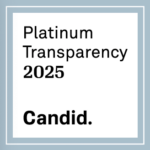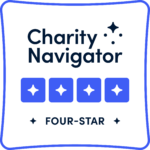The peri-approval period between completion of registration trials and FDA approval of a new cancer medicine presents a “window of opportunity” for conducting dose comparison studies, a multi-stakeholder panel said Nov. 7 at the 2013 Conference on Clinical Cancer Research.
Conducting further dose exploration as part of an expanded access program before drug approval could lead to better information in labeling about the appropriate dose without unduly delaying a drug’s approval. It could also give sponsors an opportunity to improve the competitiveness of their product or extend the length of time that a patient can take a drug by identifying more tolerable regimens or dose modification schedules, according to an issue brief![]() presented and discussed at the annual conference sponsored by the Friends of Cancer Research and Engelberg Center for Health Care Reform at Brookings.
presented and discussed at the annual conference sponsored by the Friends of Cancer Research and Engelberg Center for Health Care Reform at Brookings.
Doing dose comparison studies shortly before drug approval was one of several proposals outlined in the issue brief aimed at optimizing dosing of oncology drugs.
Other proposed strategies include incorporating randomized dose comparisons in Phase II studies and using patient-reported outcome instruments to assess drug toxicities in clinical trials. Recommendations on collection of drug exposure and tolerability data in real-world settings after approval potentially could lead to pilot initiatives using electronic medical records to assess how oncologists modify cancer drug doses in clinical practice and the resulting impact on efficacy.
A Timely Topic
The topic of dose optimization, or lack thereof, in oncology was a particularly timely one given the ongoing cardiovascular safety concerns and questions about the appropriate dose of Ariad Pharmaceuticals Inc.’s leukemia drug Iclusig (ponatinib). Sales of the kinase inhibitor were temporarily suspended Oct. 31 at FDA’s request as the sponsor and agency work to narrow the label and implement a Risk Evaluation and Mitigation Strategy (“Can Iclusig Return To Market? Ariad Sees Path Through Restricted Distribution REMS” — “The Pink Sheet,” Nov. 4, 2013).
Office of Hematology and Oncology Products Director Richard Pazdur, who was a signatory on the issue brief and a member of the panel, has frequently complained that oncology sponsors coming to FDA with an NDA/BLA package have not done enough to determine the product’s optimal dose (“Vandetanib Shows Heightened FDA Focus On Dose Optimization For Cancer Drugs” — “The Pink Sheet,” Dec. 6, 2010).
At the FOCR/Brookings conference Pazdur spoke bluntly about the current shortfalls in this area, particularly the need to address questions about dose before a drug comes to market and the importance of unbiased evaluations of toxicity (see sidebar).
Pazdur’s collaboration with representatives from industry, patient and physician groups and the National Cancer Institute in developing the issue brief suggests the pharmaceutical industry may be headed for a sea change in how it thinks about dose determinations for oncologics in the pipeline.
On Dosing, Oncology Stands Apart
A key theme underlying the issue brief and panel discussion is that in oncology, attention to dose optimization historically has gotten short shrift in development programs where efficacy is king.
Phase II and III studies in oncology rarely evaluate more than one dose. Rather, doses selected for registration trials historically have been based on the maximum tolerated dose, a concept borne out of the development of highly toxic chemotherapeutic agents where the thinking was that the more of the agent administered without unacceptable toxicity, the better.
However, this approach does not take into consideration inter-patient variability in treatment response and toxicity, whereby some patients require a higher dose to achieve clinical benefit and others are unable to tolerate the maximum tolerated dose. The lack of well-defined, dose- and exposure-response relationships for cancer drugs often leads to a high rate of dose reductions and a failure to identify patients who may benefit from a higher dose.
Furthermore, the maximum tolerated dose may not be the “optimal biologic dose” at which some oncologic agents, such as hormonal or targeted therapies, achieve maximum efficacy, and this approach fails to adequately evaluate the long-term cumulative toxicities of a drug or changes in tolerability over time.
“This limitation is especially important as treatments have become more effective and patients stay on therapy far longer than has historically been the case in cancer care,” the issue brief states. “This is further complicated by the fact that decisions around dosing and tolerability are often made in the heavily pre-treated Phase I population, which typically has a limited life expectancy and risk tolerance compared to the Phase III or intended use population, which may have a very different tolerance for acute and chronic toxicity.”
American Society of Clinical Oncology Chief Medical Officer Richard Schilsky, a signatory on the issue brief, said oncology stands apart from other medical specialties when it comes to defining the optimal dose.
“We have many examples in clinical medicine where we monitor drug levels as part of routine clinical care of patients, and it’s truly the exceptional circumstance where we monitor drug levels in managing any patient with cancer with any particular cancer therapeutic approach,” Schilsky said. “And that’s generally because we have not taken the time in our drug development process to define the relationship between the doses administered, the exposure that is achieved in the patient, and the efficacy and toxicity outcomes experienced by individuals.”
“We do a very bad job, if not an abysmal job, at dose,” Pazdur said, drawing attention to the regulatory challenges of labeling a drug when the optimal dose is unclear.
“One of the dilemmas that we frequently get when we’re looking at NDAs at the FDA is the following … we have a completed Phase III study that is submitted to the FDA, it shows an improvement on progression-free survival or overall survival. When we take a look at the dose, the dose was x milligrams. When you really take a look at how many patients had dose modifications in the first two or three courses of therapy, it was 80%, sometimes 85% of patients had major dose modifications for toxicity. Well, what should be the labeled dose of the drug? Should it be the dose that was written in the trial? Or should it be that dose that represents what most patients got during the trial?”
Expanded Access = A “Window Of Opportunity”
The issue brief points out that although dose comparisons are needed in oncology, performing such studies in the pre-market setting potentially could slow the development of new drugs and become excessively burdensome. However, relegating them to the post-market setting, as is currently done, also presents challenges; patients may not want to participate in a trial for an approved drug, and the study might need to be conducted outside the U.S.
Millennium Pharmaceuticals Ltd. VP-Global Medical Affairs Oliver Rosen, one of the signatories on the issue brief, said that when data from registration studies get into the public domain, it usually triggers a huge desire among the affected patient population for access to the drug. He presented the authors’ proposal for a dose-comparison study in the period of time after completion of registration-directed trials but prior to FDA approval.
“We feel that this time is something very valuable and one could do a study in this setting to optimize the dosing schedule for a drug to collect additional data,” Rosen said. “Usually this space is only filled with an expanded access program. We are rather proposing a clinical trial, and the attractiveness of such a trial is the fact that there would be no placebo arm. It would only be arms with different dose levels.”
The primary objective of such a study would be to determine whether a lower dose leads to a decrement in an early efficacy endpoint, such as response rate, and only minimal data collection would be required.
Rosen said such an approach would require close collaboration between FDA and the sponsor. He outlined two possible approaches on the timing of dose comparison studies in this peri-approval period.
One approach would involve starting a dose comparison study following public release of high-level data from the registration study. However, because of the time considerations inherent in conducting such a study, this route likely would lead to a delay in the PDUFA review goal date for an application and would require a supplemental NDA/BLA filing.
Instead, Rosen favored an earlier trigger for a dose comparison study following a milestone in the registration study to ensure that the dosing data are considered by FDA in the NDA/BLA review without delaying the user fee date.
The peri-approval approach would give sponsors a second chance to further optimize dosing information in labeling and would allow for different dosing schedules that might have evolved over time in the pivotal study, Rosen said, adding that a sponsor’s post-marketing commitments also could be reduced.
While the issue brief and some panelists described this approach as a “window of opportunity” study, Pazdur preferred to refer to it as an expanded access study. There is no reason why expanded access programs cannot simultaneously enable patients to use an investigational medicine while also addressing gaps in the clinical research, he said.
“You can walk and chew gum at the same time, so why can’t you answer a simple question? And that could be randomizing two doses of the drug. All of the patients get the drug, so it answers the issue of access, yet you’re answering a question” in the least burdensome fashion possible, Pazdur said.
“It’s not meant to provide the most rigorous studies, but it will give you more data than we have now, which is basically probably sometimes very little in terms of comparative looking at dosing schedules or different dosing levels.”
Better Data Collection
As an alternative to dose optimization studies in the peri-approval period, the issue brief recommends building randomized dose comparisons into the Phase II program.
Pazdur noted that many cancer drugs are approved on the basis of relatively large, single-arm studies encompassing approximately 150-200 patients. He suggested turning these uncontrolled trials into a vehicle that better informs dosing. “One could easily do a randomized study taking a look at dose, 20 mg vs. 30 mg, etc., looking at response rate, and answering a question and also getting a drug registered on the basis of what the most favorable response is with the arm that yields that.”
Validated PRO tools are needed to better capture the patient experience with drug toxicities in pre-market clinical trials, the brief says. Post-approval, real-world data on drug exposure, tolerability, adverse events and dose modifications should be collected and evaluated through such mechanisms as FDA’s Sentinel Initiative, ASCO’s CancerLinQ quality improvement and outcomes data system, and independent registries.
“I think that many times oncologists will not even use the recommended dose if they feel that it is too high; in their own practices they will dose-modify, so it would be interesting to get that data from one of these organizations if it can be captured correctly, taking a look not only at the safety profile but also the efficacy,” Pazdur said.
The CCCR conference was one of several recent public forums where Pazdur has cited the promise of electronic medical records in ensuring the safety of cancer drugs after approval (“The Next Phase In Oncology: FDA’s Pazdur Has New Vision For Drug Development” — “The Pink Sheet,” Nov. 11, 2013).

